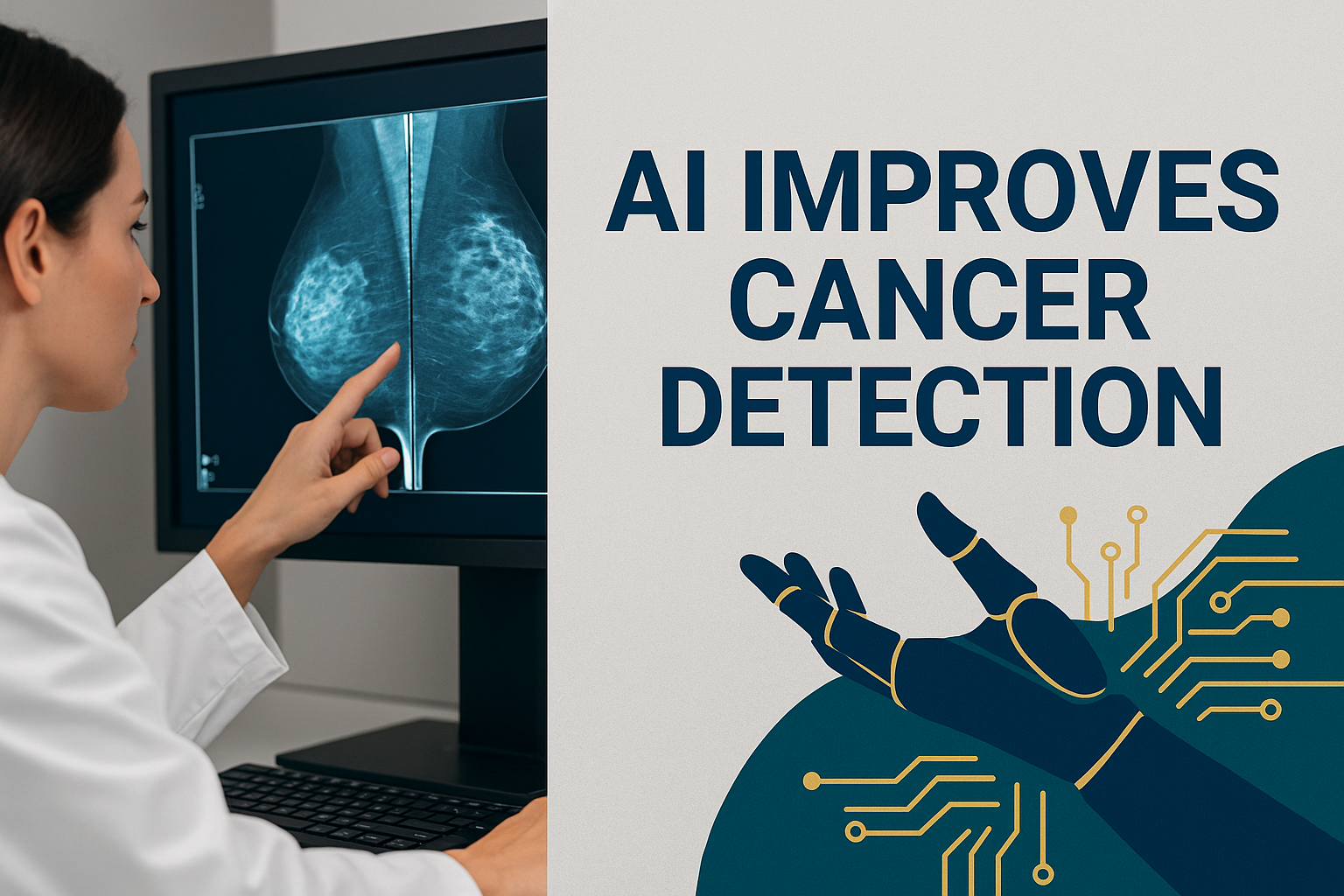AI Breakthroughs Are Making Cancer Detection More Accurate
Advanced | June 30, 2025
✨ Read the article aloud on your own or repeat each paragraph after your tutor.
Boosting Accuracy Across the Board
AI in Early Detection
Hey everyone, let’s chat about some really promising news in the fight against cancer. One major area of progress is how AI improves cancer detection across multiple diagnostic tools. It seems like artificial intelligence, or AI, is really starting to hit its stride in helping doctors find cancer earlier and more accurately. We’re seeing breakthroughs reported across various types of cancer, from breast and prostate to lung and pancreatic cancer.
Smarter Medical Imaging
One area where AI is making a big difference is in analyzing medical images like mammograms and CT scans. Traditionally, radiologists spend countless hours scrutinizing these images. Now, AI models are being trained on massive datasets to spot subtle signs that might be missed by the human eye, sometimes even before they’re obvious. This isn’t just about speed; it’s genuinely improving the accuracy of detection.
Beyond Imaging: New Ways to Detect
Liquid Biopsies and Pathology
It’s not just imaging benefiting from AI. We’re also seeing cool advancements in areas like liquid biopsies and pathology. For instance, a new AI-driven urine test shows promise for early prostate cancer detection, offering a less invasive option than traditional biopsies. Meanwhile, in pathology, AI can analyze digital slides of tissue samples to help classify cancer subtypes more quickly and consistently.
Genetic Pattern Analysis
Another exciting development involves using AI to analyze DNA methylation patterns to classify over 170 different cancer types with impressive precision. This kind of technology could potentially revolutionize how tumors are identified, especially in tricky cases where getting a tissue sample is difficult or risky.
Supporting Doctors, Not Replacing Them
These AI tools are designed to work alongside medical professionals, not replace them. By flagging suspicious areas or analyzing complex data, AI can help doctors make more informed decisions and prioritize cases. Think of it as giving doctors a powerful co-pilot in the diagnostic process.
The Big Picture: How AI Improves Cancer Detection and Saves Lives
The ultimate goal, of course, is to catch cancer at the earliest possible stage. When cancer is detected early, treatment is often more effective, and the chances of a full recovery are much higher. These AI advancements are really moving the needle in that direction, potentially saving lives and improving patient outcomes.
Vocabulary
- Breakthrough (noun): A sudden, dramatic, and important discovery or achievement.
- Example: “Scientists announced a major “breakthrough” in renewable energy technology.”
- Accuracy (noun): The quality or state of being correct or precise.
- Example: “The GPS device showed high “accuracy” in pinpointing our location.”
- Scrutinizing (verb): Examining something closely and carefully.
- Example: “The detective spent hours “scrutinizing” the evidence.”
- Subtle (adjective): So delicate or precise as to be difficult to analyze or describe.
- Example: “She noticed a “subtle” change in his mood.”
- Dataset (noun): A collection of related sets of information, composed of separate elements but combined for a particular purpose.
- Example: “The AI model was trained on a “dataset” of thousands of images.”
- Pathology (noun): The study of the causes and effects of diseases.
- Example: “The doctor ordered a “pathology” report to examine the tissue sample.”
- Biopsy (noun): An examination of tissue removed from a living body to discover the presence, cause, or extent of a disease.
- Example: “The patient needed a “biopsy” to determine if the tumor was malignant.”
- Classify (verb): Arrange a group of people or things in classes or categories according to shared qualities or characteristics.
- Example: “The system can “classify” emails as spam or not spam.”
- Precision (noun): The quality, condition, or fact of being exact and accurate.
- Example: “The surgery was performed with great “precision”.”
- Prognosis (noun): The likely course of a disease or ailment.
- Example: “The early diagnosis improved her “prognosis”.”
Discussion Questions (About the Article)
- What kinds of medical images are AI models helping to analyze for cancer detection?
- How are AI advancements helping in areas like liquid biopsies and pathology?
- What are some of the specific benefits of using AI for analyzing DNA methylation patterns?
- In what way are AI tools intended to assist medical professionals?
- Why is catching cancer at an early stage so important according to the article?
Discussion Questions (About the Topic)
- What are some potential challenges or ethical considerations in using AI for medical diagnosis?
- How might AI change the role of radiologists and pathologists in the future?
- Do you think patients will trust an AI-assisted diagnosis as much as a purely human one? Why or why not?
- How could the cost of implementing AI technology impact access to these improved detection methods globally?
- What other areas in healthcare do you think AI could significantly improve?
Related Idiom
A game changer
- Meaning: Something that significantly changes the way things are done.
- Example: This new AI model could be “a game changer” for cancer detection.
📢 Want more practical tips to improve your English while learning about today’s important topics? Sign up for the All About English Mastery Newsletter!
Follow our YouTube Channel @All_About_English for more great insights and tips.
This article was inspired by: Yahoo News, Date: June 22, 2025; Orlando Health, Date: June 22, 2025; Charité – Universitätsmedizin Berlin, Date: June 25, 2025; Physician’s Weekly, Date: June 29, 2025.


